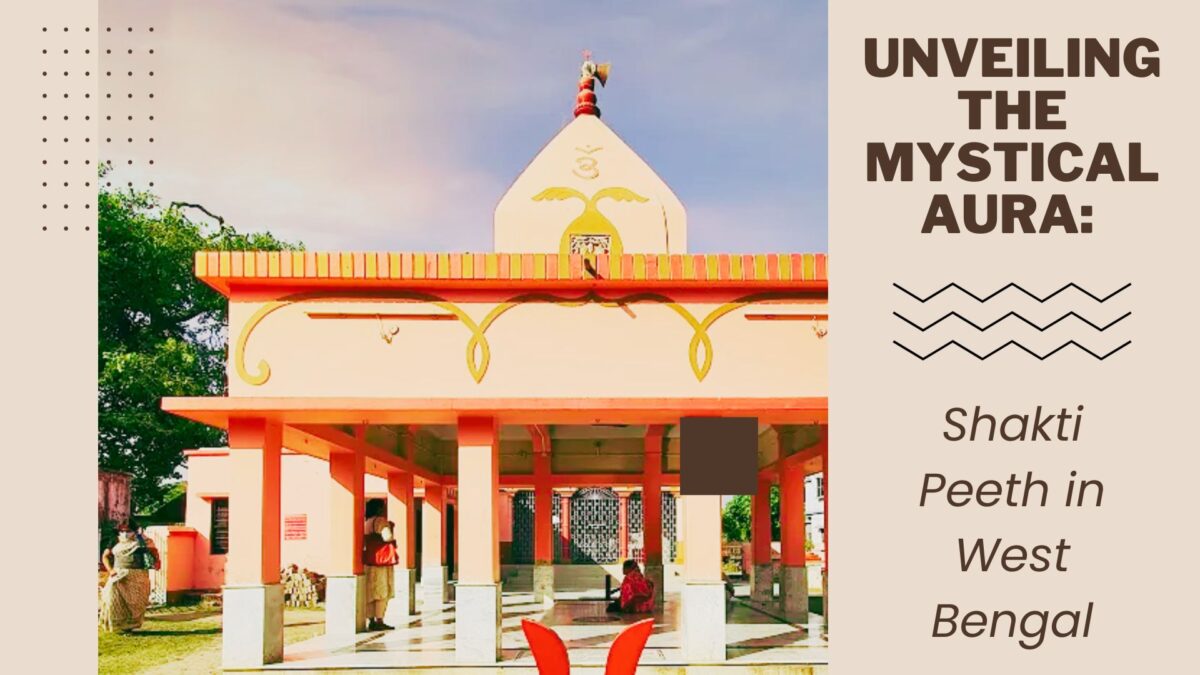Nestled in the cultural heartland of India, West Bengal boasts a rich tapestry of spiritual and historical wonders. Among the sacred sites that draw pilgrims and curious travelers alike, the Shakti Peeths stand out as significant landmarks. In this blog post, we delve into the mystical world of Shakti Peeths in West Bengal, exploring their legends, significance, and the divine energy that permeates these sacred grounds.
Understanding Shakti Peeths
Shakti Peeths, revered as sacred shrines dedicated to Goddess Shakti, hold immense spiritual importance in Hindu mythology. Legend has it that these divine sites are where body parts of the Goddess Sati fell during Lord Shiva’s cosmic dance of destruction, the Tandava. Each Shakti Peeth is associated with a specific body part, and together they form a celestial network of energy.
Breathtaking Landscape of West Bengal
West Bengal, with its diverse topography ranging from the serene foothills of the Himalayas to the lush plains, is home to several Shakti Peeths. These sacred sites are not only spiritually significant but also offer a unique blend of natural beauty and cultural heritage.
Kalighat – The Prime Shakti Peeth
Undoubtedly the most famous Shakti Peeth in West Bengal, Kalighat, situated in Kolkata, attracts millions of devotees annually. Legend has it that the toes of the right foot of Goddess Sati fell here. The Kali Temple at Kalighat is a testament to the city’s deep-rooted spiritual history and cultural richness.
Tarapith – The Holy Pilgrimage
Tarapith, another revered Shakti Peeth, is situated on the banks of the Dwarka River. Dedicated to the eyes of Goddess Sati, it is a popular destination for pilgrims seeking spiritual solace. The Tarapith Temple, surrounded by lush greenery, offers a tranquil retreat for devotees.
Bakreshwar – The Sacred Pool
Bakreshwar, located in the Birbhum district, is associated with the wrist of Goddess Sati. The hot springs here are believed to possess healing properties, making it a unique Shakti Peeth where devotees come seeking both spiritual and physical rejuvenation.
Kamakhya Devi Temple in Assam – A Pan-Indian Pilgrimage
While not in West Bengal, the Kamakhya Devi Temple in Assam deserves mention due to its pan-Indian significance. Associated with the reproductive organs of Goddess Sati, this Shakti Peeth attracts devotees from all corners of the country.
Pilgrimage Experience and Rituals
Embarking on a journey to the Shakti Peeths in West Bengal is a transformative experience. Pilgrims engage in rituals, prayers, and darshans, immersing themselves in the divine energy that permeates these sacred spaces. The vibrant festivals and rituals add a cultural dimension to the pilgrimage, creating a unique tapestry of spirituality.
Conclusion: The Shakti Peeths in West Bengal offer not only a spiritual
odyssey but also a chance to witness the cultural richness and historical significance of this enchanting region. As you traverse the sacred grounds, you’ll find yourself immersed in the age-old legends, vibrant rituals, and divine energy that make these Shakti Peeths an integral part of India’s spiritual heritage. Plan your pilgrimage and embrace the mystical aura of West Bengal’s Shakti Peeths.
Recommended Read:
5 Tips To Plan a (Perfect) Shakti Peeth Tour For Your Parents



